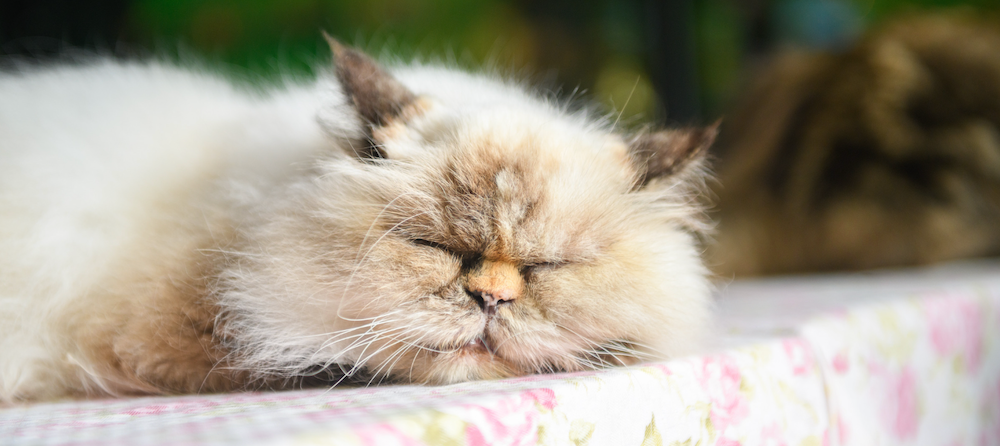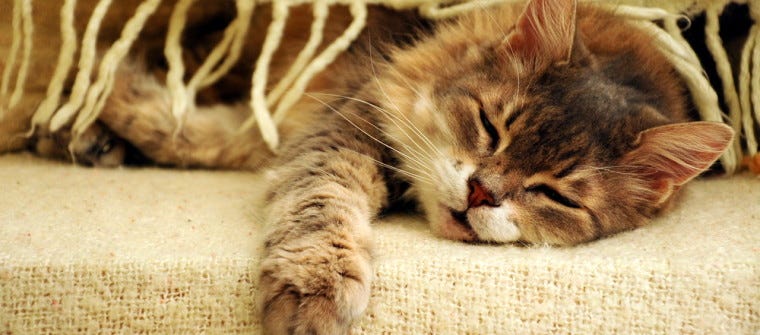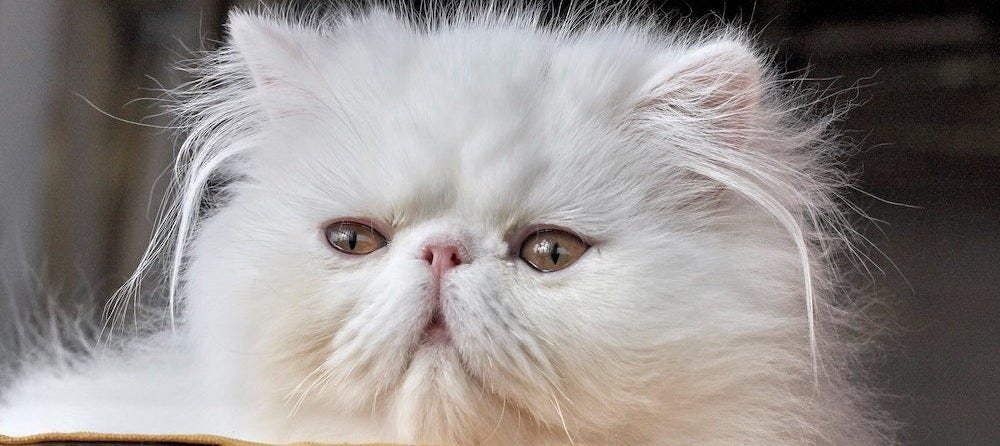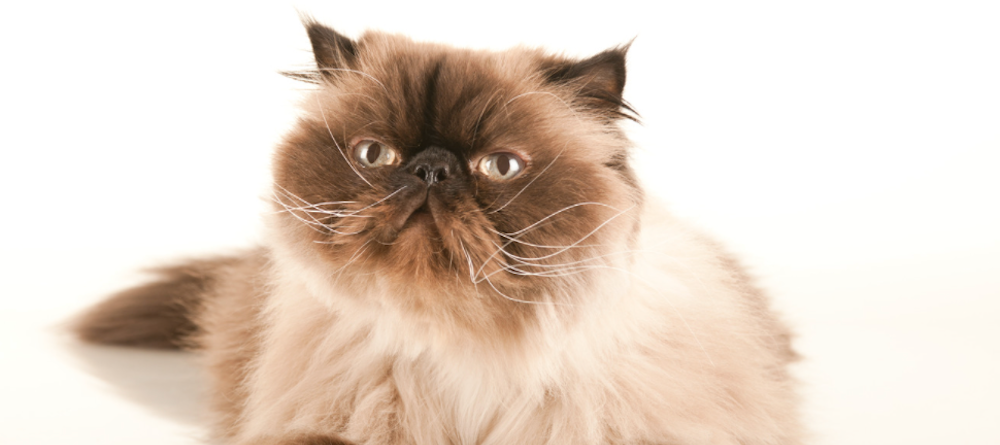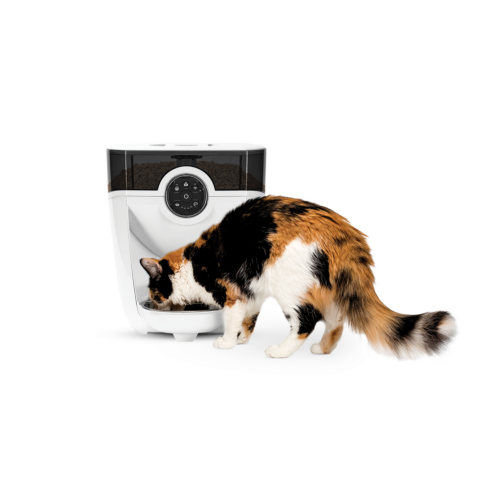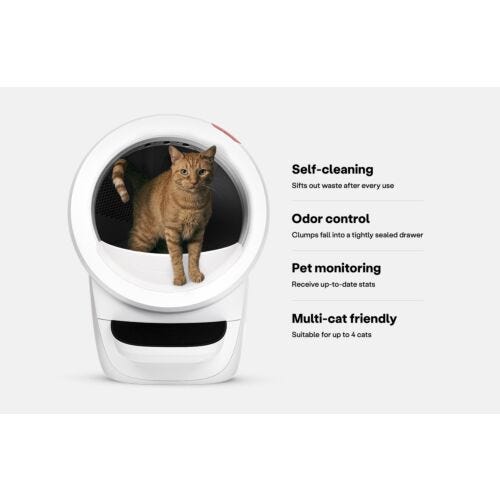Cats certainly know how to embrace laziness—the average feline sleeps 15 hours a day, after all. However, not all cats are born equally idle. Today we’re spotlighting 5 lazy cat breeds (with absolutely no judgment)!
Persian
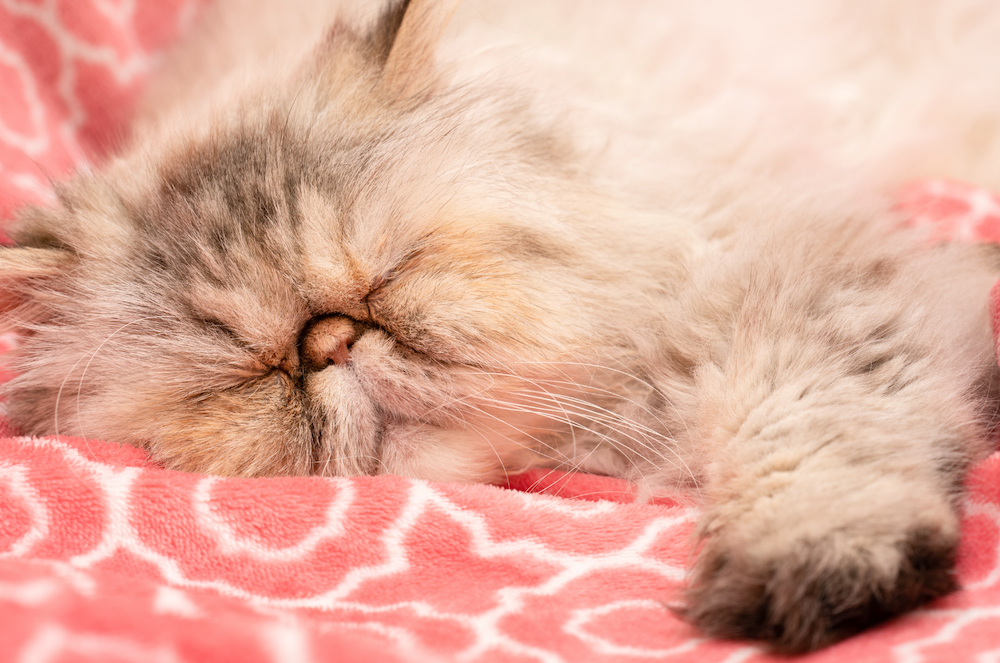
Persian cats have been called “furniture with fur” because of their long periods of inactivity—of all the lazy cat breeds, this one most definitely fits the bill. These cats have a sweet, gentle nature and prefer a calm atmosphere. While they are happy to be groomed and petted, they aren’t extremely interested in playing games or chasing toys. However, as with any pet, it’s important to try to engage your Persian in some playtime exercise every day.
Just because a Persian cat is lazy doesn’t mean you can be lazy with their upkeep. The hallmark feature of the Persian—long, thick, silky fur—requires daily grooming to ensure it doesn’t become matted or tangled. Persian cats also tear up frequently, which can cause staining on their fur near their eyes, so it’s best to wipe their eyes daily. This breed may also experience breathing difficulties and respiratory distress due to their flat (brachycephalic) faces.
Despite their naturally inactive temperaments, Persian cats have thrived for centuries—making them one of the oldest natural cat breeds in existence. It is thought that this breed originated in Persia (modern-day Iran) and Turkey, having potentially developed from Turkish Angora cats crossed with other Asian longhair cats. When an Italian traveler brought a couple Persian cats into Europe in the 1600s, their path toward stardom began. What really sealed the deal was when Queen Victoria adopted two of her own pet Persians in the early 1900s. This boosted the desire for these pets and gave them the status of royalty in many people’s eyes.
Himalayan
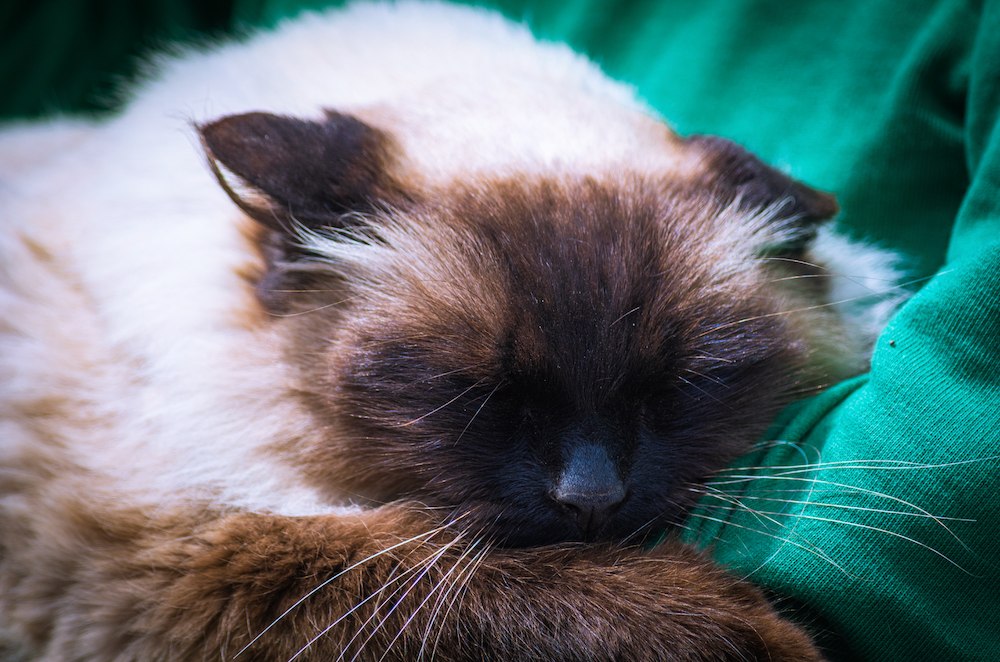
The Himalayan cat is a cross between a Persian and a Siamese. This breed is docile and sweet, and tends to reserve attention for family members. They rarely ascend higher than their human’s lap, being content to lounge on the same level as people or even on the floor. Like most lazy cat breeds, Himalayans prefer a calm, quiet routine.
If you like sleeping in on Sunday mornings, taking naps in the sun, and watching late-night TV, your Himalayan will be your new best friend. They will gladly curl up on the couch next to you or find a sunspot to lay in. While they won’t be jumping off the walls or performing acrobatic tricks for you, that doesn’t mean they aren’t playful from time to time!
The 1920s breeding program that created the Himalayan desired a cat that had the beautiful long fur of the Persian and the colorpoint of the Siamese cat. This crossbreeding gives the Himalayan a very distinct and elegant look but means that the grooming requirements are high maintenance. Their hair is very fine and silky, which leads to matting and tangling. Using a wide-toothed comb daily will keep your Himmie silky and soft as well as clean. This helps to remove dirt and dust that can collect in their fur.
Exotic Shorthair
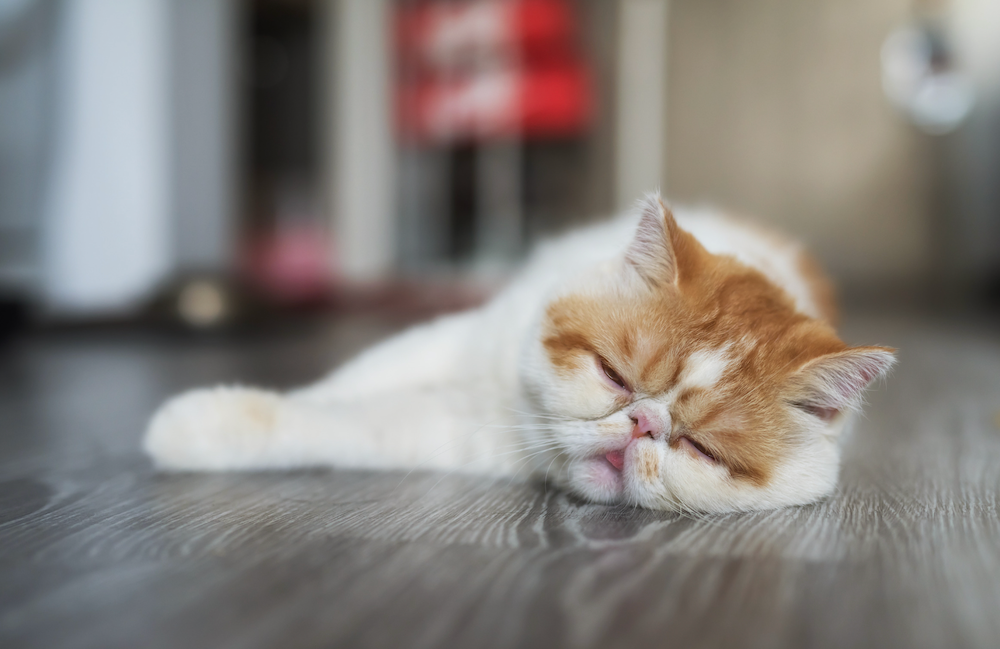
Although livelier than some of the other lazy cat breeds on our list, Exotic Shorthair cats retain many of their Persian ancestors’ characteristics—and not just in looks! They are sweet, quiet, loyal, and affectionate. Although the Exotic Shorthair doesn’t quite live up to the “furniture with fur” standard set by the Persian, this cat will enjoy lazing around with you.
The Exotic Shorthair cat mimics a lot of the traits of the Persian breed, which is known for their laid-back and easygoing nature. However, the Exotic Shorthair is regarded as slightly more active than the Persian and loves some playtime with their family members.
The Exotic Shorthair cat is considered a newer breed. They were bred in the U.S. in the 1950s and 60s with the hopes that they would have the same sweet and easygoing Persian demeanor, but with shorter and more manageable hair. Breeding Persian cats with American Shorthairs resulted in kittens with round faces, short snouts, and large eyes. Breeders then bred the kittens in that litter that held some of the characteristics of the Persian, with Persian cats, and what resulted was a Persian-looking cat with short, dense fur. This became the Exotic Shorthair cat that we know and love today.
Selkirk Rex
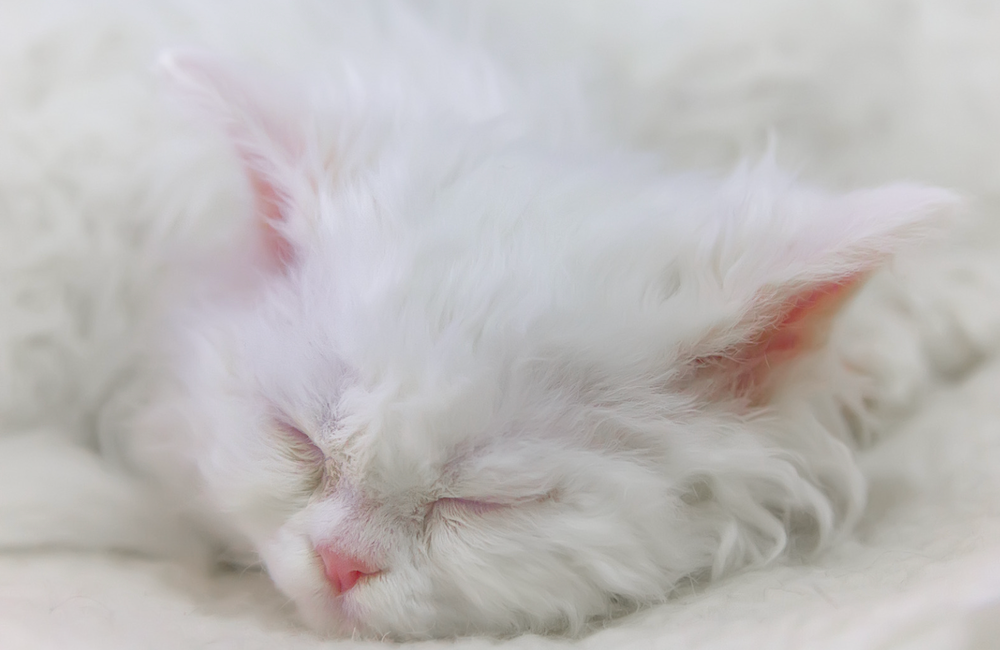
Of all the Rex cats, the Selkirk Rex is best known for their easygoing disposition. They are cuddly and occasionally playful, but they know how to relax. And with their unique curly coat, you might mistake one for a living, breathing teddy bear!
While your Selkirk Rex will enjoy a good game every now and then, they aren’t the type to beg for your attention or throw toys at your feet. They are very laid-back and don’t require a lot of exercise. If you’re looking for a cat that likes to lounge and have a nice relaxing night in (every night), the Selkirk Rex is calling your name.
The Selkirk Rex was first identified in the U.S. in the late 1980s. Because they were eventually bred with Persians, Exotic Shorthairs, and British Shorthairs, Selkirk Rexes have snubbed noses and large circular eyes. While this breed has several features that stand out, you really can’t get past their adorable coats. When they have long hair, their coats are as wooly as sheep; with short hair, they’re as soft and sweet as a lamb. Even their whiskers can be curly!
Fun fact: Selkirk Rex litters can have both curly-coated and straight-haired kittens. Those with curly coats lose their curls in the first months after birth. But at 8 to 10 months old, their curls return and increase in curliness until 2 years of age.
British Shorthair
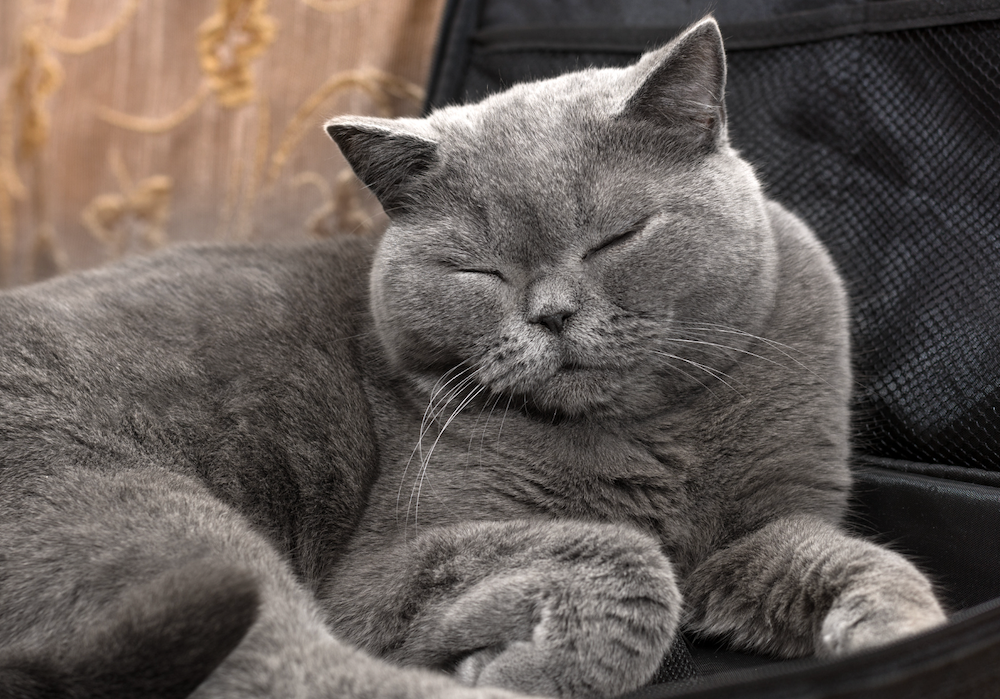
Once upon a time, British Shorthair cats were known for being efficient hunters and mousers among English farms. Now this mellow, easygoing breed would rather snooze by the fireplace or snuggle with their humans than engage in a daring game of cat and mouse.
British Shorthairs are loyal and devoted companions. These cats really enjoy watching from a distance and being paid attention to when they ask for it. If you are trying to win over your British Shorthair, play it cool. These cats don’t like being smothered and they respect people who acknowledge their chill vibe.
The British Shorthair is associated with Great Britain, but their origins are very well-traveled. When the Romans came to Britain, they brought domesticated street cats to control the pest populations on their ships. These cats began mating with European wildcats. The resulting lineage was a cat that was a great hunter with thick, short fur that helped them adapt to various environments, all while being sociable and friendly.
British Shorthairs have thick, dense coats that come in a variety of colors. The most prominent and potentially sought-out color is the “British Blue,” a blue British Shorthair. You might distinguish the British Shorthair from another breed due to their short and stubby legs, which provide them with balance and support. They also have rather round heads and chubby cheeks (that you probably want to squeeze).
Should you ever be concerned about your cat’s laziness?
Familiarizing yourself with your cat's normal sleep patterns is just one of many ways that you can ensure that your cat is healthy and happy. Most cats are crepuscular—or most active around dusk and dawn—rather than nocturnal. If your cat sleeps all day and remains sluggish around the twilight hours, pay close attention. Examples of “off” behavior where you may want to take your cat to the vet include acting lethargic when you try to play, not responding to food or treats, or hiding (and not just sleeping in a “new” place).
Furthermore, extreme laziness can lead to feline obesity. Overweight cats are at increased risk of serious medical conditions, including diabetes mellitus, osteoarthritis, urinary problems, heart disease, and more. Even if you have a lazy cat breed, try to schedule 5-10 minutes of play every day. Use toys like a laser pointer, feather wand, or an interactive mouse toy to encourage lots of movement.

